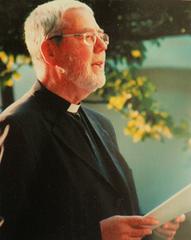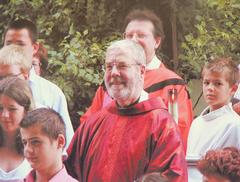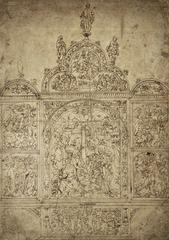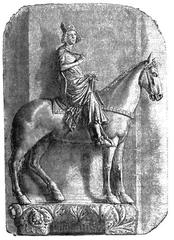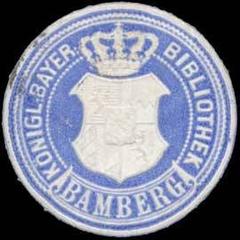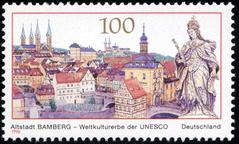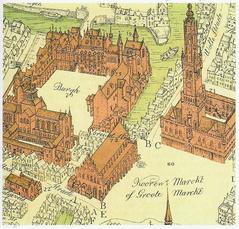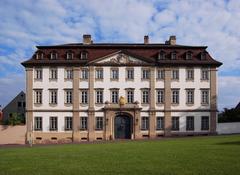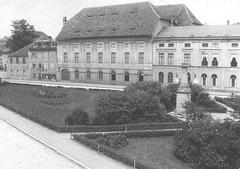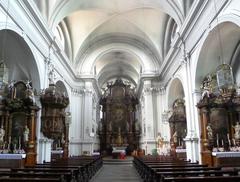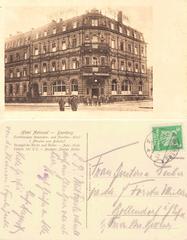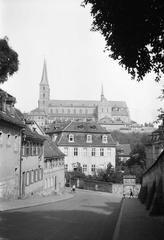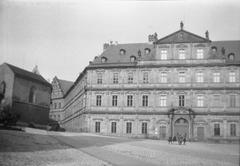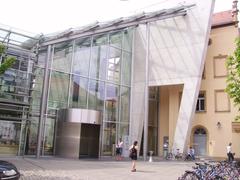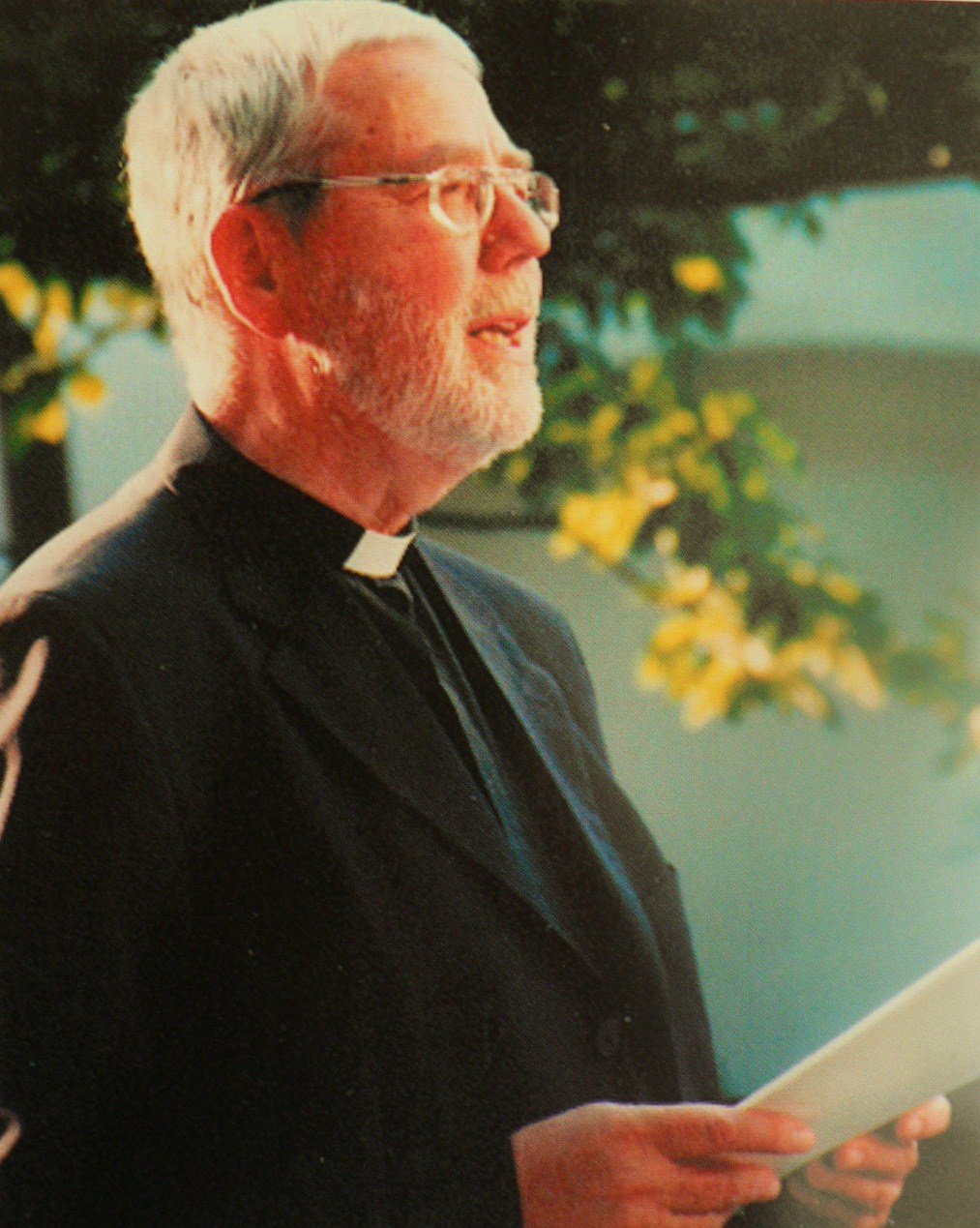
Bamberg Cathedral Visiting Guide: Hours, Tickets, and Nearby Attractions
Date: 14/06/2025
Introduction: The Enduring Legacy of Bamberg Cathedral
Bamberg Cathedral (Bamberger Dom St. Peter und St. Georg) is one of Germany’s most significant religious monuments. Located in Bamberg’s UNESCO World Heritage Old Town, it presents visitors with a remarkable journey through over a millennium of architectural evolution, imperial history, and sacred art. Founded in 1002 by Emperor Henry II and consecrated in 1012, the cathedral has survived multiple fires and reconstructions, ultimately resulting in the awe-inspiring 13th-century structure seen today. Its blend of Romanesque and Gothic elements, dominant four towers, and wealth of medieval artworks make it a must-see destination for history buffs, art enthusiasts, and travelers alike (en.bamberg.info; Spotting History).
Table of Contents
- Introduction
- Visiting Bamberg Cathedral
- History & Architectural Overview
- Artistic and Cultural Highlights
- Religious and Political Importance
- Notable Events
- The Cathedral in Bamberg’s Urban Landscape
- Restoration and Preservation
- Frequently Asked Questions (FAQ)
- Nearby Attractions
- Conclusion
- References
Visiting Bamberg Cathedral
Opening Hours
Bamberg Cathedral welcomes visitors throughout the year, though hours vary seasonally:
- November–March:
- Mon–Wed: 9:00 am – 5:00 pm
- Thu–Fri: 9:30 am – 5:00 pm
- Sat: 9:00 am – 4:30 pm
- Sun: 1:00 pm – 5:00 pm
- April:
- Mon–Wed: 9:00 am – 6:00 pm
- Thu–Fri: 9:30 am – 5:00 pm
- Sat: 9:00 am – 4:30 pm
- Sun: 1:00 pm – 6:00 pm
- May–October:
- Mon–Wed: 9:00 am – 6:00 pm
- Thu–Fri: 9:30 am – 6:00 pm
- Sat: 9:00 am – 11:30 am / 1:00 pm – 4:30 pm
- Sun: 1:00 pm – 6:00 pm
Note: Hours may change due to religious services, holidays, or special events—always confirm on the official website before your visit.
Admission & Tickets
- General Entry: Free of charge. Donations are appreciated to support maintenance and restoration (triphobo.com).
- Guided Tours: Available in German and English for €5–€8 per person. Advance booking is recommended for groups (visitBamberg.com).
- Audio Guides: Sometimes available for a small fee at the entrance or via mobile apps.
Guided Tours & Events
- Tours: Explore the cathedral’s history, architecture, and art with expert guides. Special themed tours, including those focusing on the Bamberg Horseman or imperial tombs, are offered.
- Events: The cathedral regularly hosts concerts, organ recitals, and liturgical celebrations, especially during summer and major Catholic holidays. Check the event calendar for details.
Accessibility
- Mobility: A ramped side entrance provides partial wheelchair access. Most floors are level, though some chapels and crypts have steps.
- Facilities: Accessible restrooms nearby; large-print materials are available on request.
- Assistance: Service animals are welcome, and staff can assist if notified in advance.
Visitor Tips
- Best Times: Early mornings or late afternoons on weekdays are quieter. June–August is busiest (wanderlog.com).
- Dress Code: Modest clothing—shoulders and knees covered, hats removed inside.
- Photography: Non-flash photography is allowed for personal use. Tripods/commercial photography require permission.
- Duration: Allocate 45–90 minutes for your visit.
- Luggage: No cloakroom; large bags may be restricted.
History & Architectural Overview
Origins and Evolution
Bamberg Cathedral was established alongside the Bishopric of Bamberg by Emperor Henry II. After devastating fires in the 11th century, the current structure—built between the late 12th and early 13th centuries—emerged, showcasing a harmonious transition from Romanesque to Gothic architecture (explorial.com; oldest.org).
Architectural Features
- Exterior: Four imposing towers (approx. 81 m each), Romanesque solid walls and arches, Gothic pointed arches and ribbed vaults. The grand portals are adorned with geometric and religious sculptures (Artchive).
- Interior: The nave spans 94 meters in length. The dual choirs at each end and symmetrical towers emphasize the cathedral’s imperial symbolism (Germany Travel).
Artistic and Cultural Highlights
- Tomb of Emperor Henry II & Empress Cunigunde: Carved by Tilman Riemenschneider (1499–1513), this late Gothic masterpiece features reliefs of their lives (britannica.com).
- Bamberg Horseman (Bamberger Reiter): A mysterious 13th-century equestrian statue—an icon of German medieval sculpture (Explorial).
- Tomb of Pope Clement II: The only papal tomb north of the Alps, highlighting Bamberg’s ecclesiastical status (oldest.org).
- Altarpiece of Mary by Veit Stoss: A dramatic example of late Gothic woodcarving (Winedharma).
- Choir Stalls and Crypts: Richly carved stalls, two crypts, and a host of altars and artworks create a space of contemplation and wonder (The Crazy Tourist).
Religious and Political Importance
Bamberg Cathedral was conceived as a symbol of imperial authority and spiritual unity under Emperor Henry II. As a center of the Bishopric and later an archdiocese, it played a critical role in the Holy Roman Empire’s religious and political landscape. The presence of canonized rulers and a pope’s tomb cements its spiritual significance (explorial.com).
Notable Events
- Consecration in 1012, destruction by fire in 1081, and subsequent reconstructions.
- Burial of Emperor Henry II and Empress Cunigunde.
- Interment of Pope Clement II (1047).
- Martin Luther’s sermon in 1545 during the Reformation.
- Secularization (1802/03) and elevation to archdiocese (1817) (en.bamberg.info; britannica.com).
The Cathedral in Bamberg’s Urban Landscape
Perched atop Domberg hill, the cathedral anchors Bamberg’s Old Town. It is surrounded by historical landmarks including the Alte Hofhaltung (Old Court), Neue Residenz (New Residence), and the picturesque Rose Garden. The cathedral’s towers are visible from afar, marking Bamberg’s skyline (Germany Travel).
Restoration and Preservation
Ongoing restoration has carefully preserved the cathedral’s medieval character, including removal of many Baroque additions. Post-1990 efforts have focused on stonework and art conservation, ensuring the cathedral’s legacy for future generations (oldest.org).
Frequently Asked Questions (FAQ)
Q: What are the cathedral’s opening hours?
A: Hours vary seasonally; see the “Opening Hours” section or consult the official website.
Q: Do I need a ticket?
A: General entry is free; guided tours require a ticket.
Q: Is the cathedral wheelchair accessible?
A: Partially, via a ramped side entrance.
Q: Is photography allowed?
A: Non-flash photography is allowed for personal use; tripods require permission.
Q: Are guided tours available?
A: Yes, in German and English; group tours should be booked in advance.
Nearby Attractions
- Alte Hofhaltung (Old Court): Former bishop’s residence, now a museum.
- Neue Residenz: Baroque palace with rose garden and city views.
- Bamberg Horseman statue: Located inside the cathedral.
- Bamberg Old Town Hall: Famous for its unique river location.
- Rose Garden: Offers panoramic views of Bamberg.
- Kloster Michelsberg and Altenburg Castle: Both accessible by foot or bus (planetware.com; trek.zone).
Conclusion
Bamberg Cathedral is not only a triumph of Romanesque and Gothic architecture, but also a living symbol of the city’s spiritual, political, and cultural past. With free entry, expert-led tours, and a central location surrounded by other historic sites, the cathedral offers an accessible and enriching experience for every visitor. Plan your visit during off-peak hours, take advantage of guided tours, and explore the surrounding Old Town to fully appreciate Bamberg’s unique heritage.
For real-time updates, digital guides, and detailed tour information, download the Audiala app and follow us on social media. Make sure to consult the official website before your visit.
Visuals
Alt text: Exterior view of Bamberg Cathedral with its four towers against a blue sky.
Alt text: The Bamberg Horseman, a medieval equestrian statue inside Bamberg Cathedral.
References
- Bamberg Cathedral: Visiting Hours, Tickets & Historical Guide to Bamberg’s Iconic Monument
- Spotting History
- Germany Travel
- visitBamberg.com
- Winedharma
- explorial.com
